Foods we fell in love with in the 1960s
The scrumptious Sixties
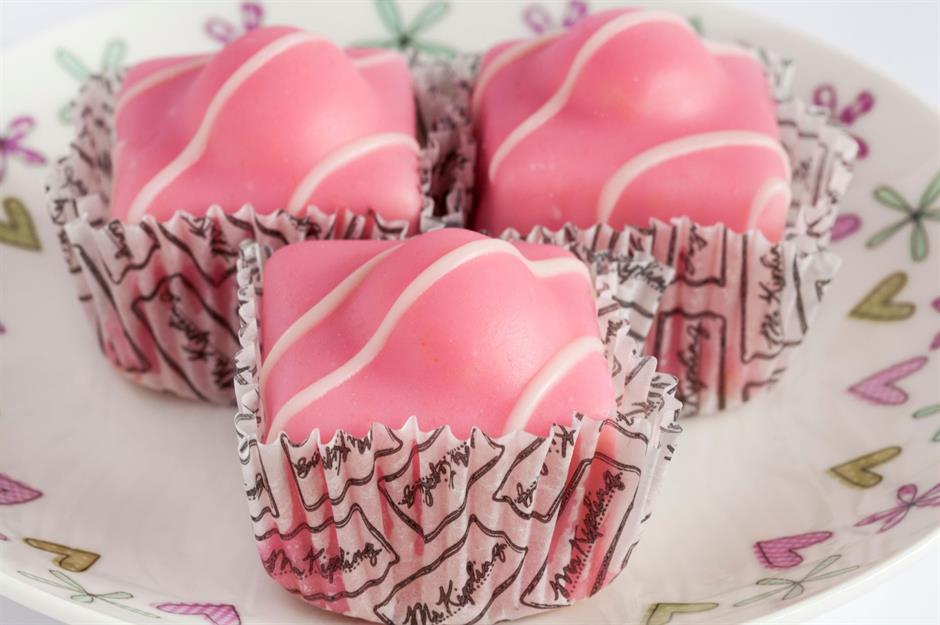
From geometric dresses to Beatlemania, the 1960s were years of social transformation and innovation. This was reflected in the foods we all loved, too; from the rise of the weekly takeaway to the vibrant puddings lining every dinner party table, we take a look at the recipes, snacks and dinner party dishes that became fashionable during the 1960s.
Click or scroll our gallery to discover what we all ate during the 1960s, counting down to our favourite of them all.
We've based our ranking on the enduring popularity of each food item in its place of origin and beyond, and on the opinions of our well-travelled (and well-fed) team. This list is unavoidably subjective.
28. Avocado pear
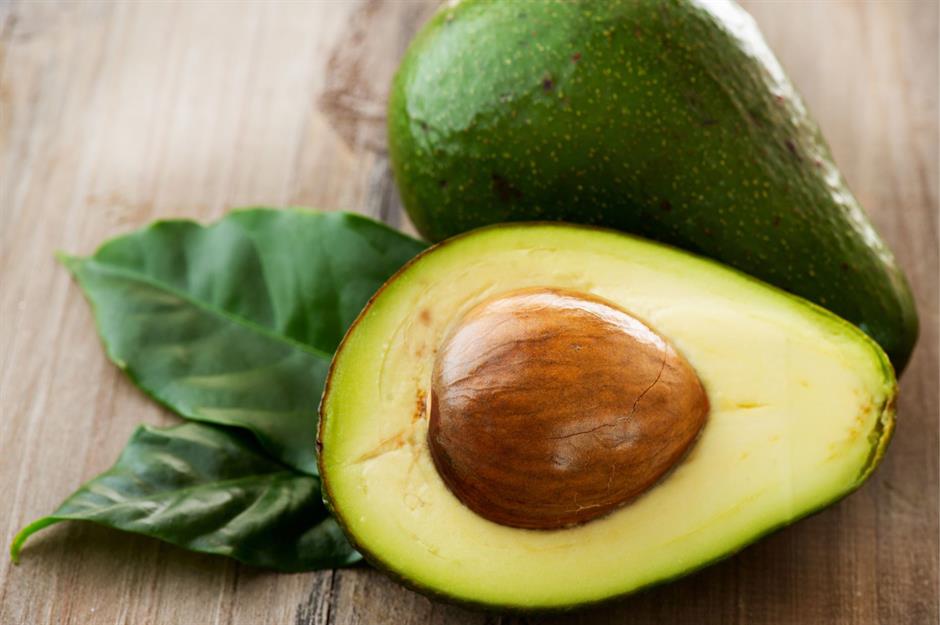
With post-war rationing finally behind Brits, new and exotic ingredients began popping up in supermarkets across the country. One arrival that got the nation talking – and not necessarily for good reasons – was the avocado. Marks & Spencer is said to have been one of the first retailers to introduce the ingredient, and it didn’t really go down well with the public. Coined ‘avocado pear’, many didn’t know what to do with the exotic fruit and it wasn’t until the 1990s that the avocado began gaining popularity.
27. Pineapple rings
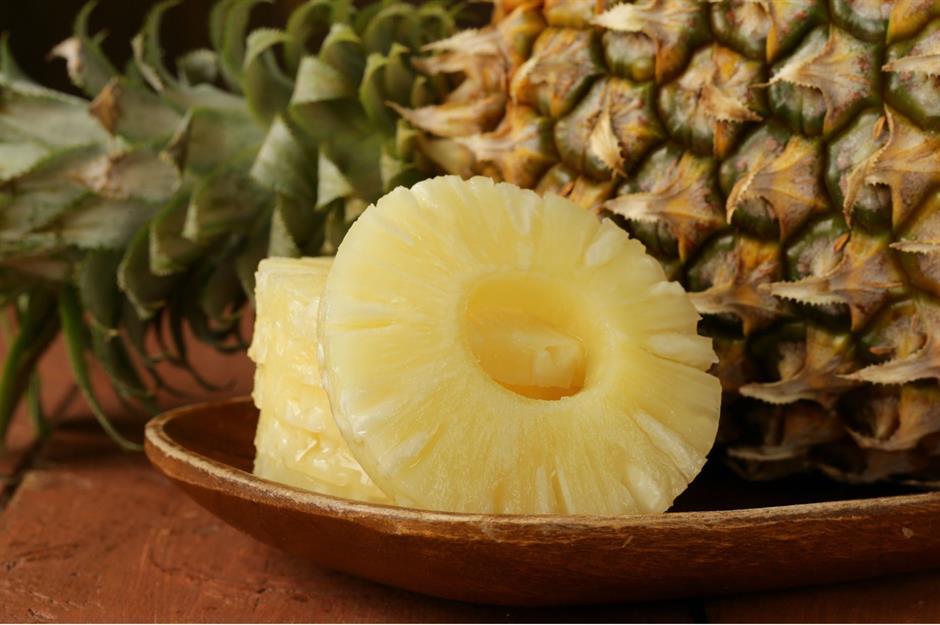
Tinned fruits have been lining store cupboard shelves since the 1920s, but it wasn’t until the 1960s and 1970s that you started finding pineapple ring-loaded dishes at dinner parties and buffets. These decades were huge for retro inventions such as cheese, pickled onion and pineapple on sticks, pineapple upside-down cake and even just cubed pineapple served with a splash of condensed milk for an easy throw-together pudding.
26. Aztec

Can you remember chomping through one of these? The Aztec bar, featuring a nougat-caramel centre and milk chocolate casing, joined the Cadbury family in 1967. Released alongside an expensive TV advert, the bar was said to be inspired by the Aztec era. The chocolate giants intended to release it to compete against the classic Mars, but after a few successful years, the bar was discontinued.
25. Maraschino cherries
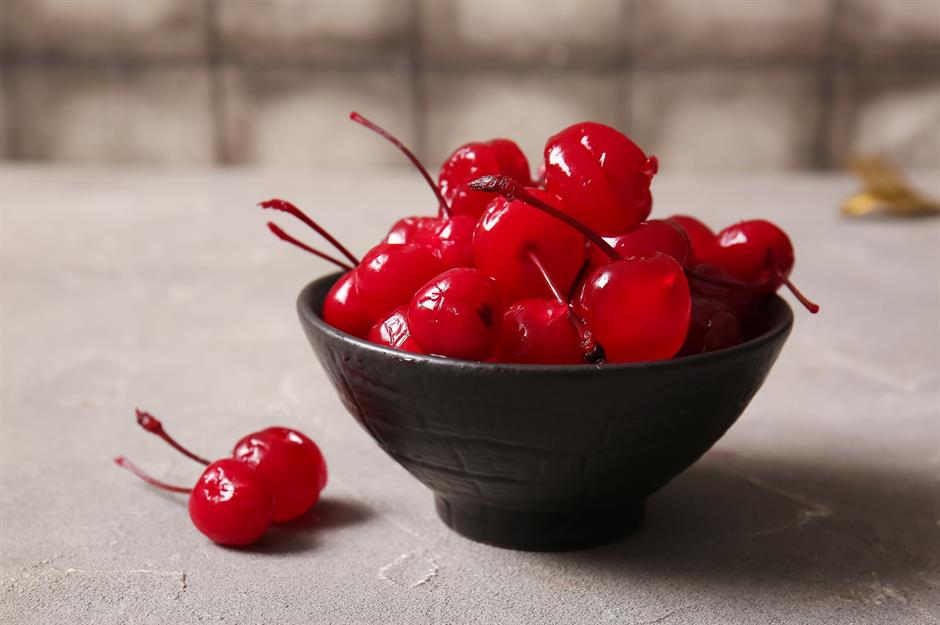
From trifles to ice cream sundaes, you couldn’t go far without finding a few of these rosy-red cherries gracing the pudding table at a 1960s dinner party. These ultra sweet yet sharp cherries may not be as popular as they used to be, but it’s always fun when a sweet treat comes topped with a couple.
24. Surf ‘n’ turf
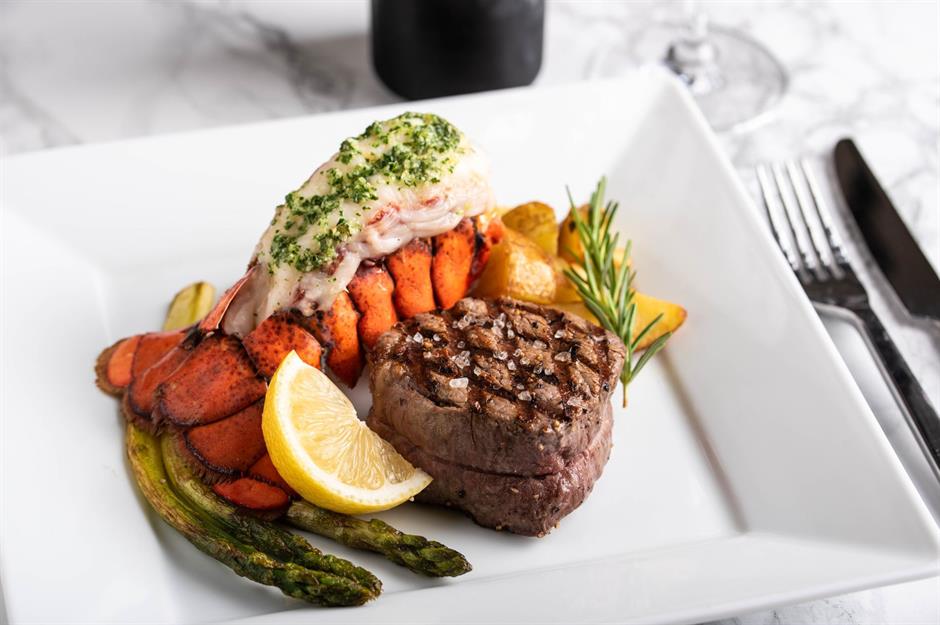
A celebratory meal favourite, you might be able to remember when this hearty dish lined every fancy restaurant menu across the country. While a classic surf ‘n’ turf typically included some kind of seafood and red meat, these days you’ll find the dish usually includes lobster tail and beef tenderloin.
23. Cherries Jubilee
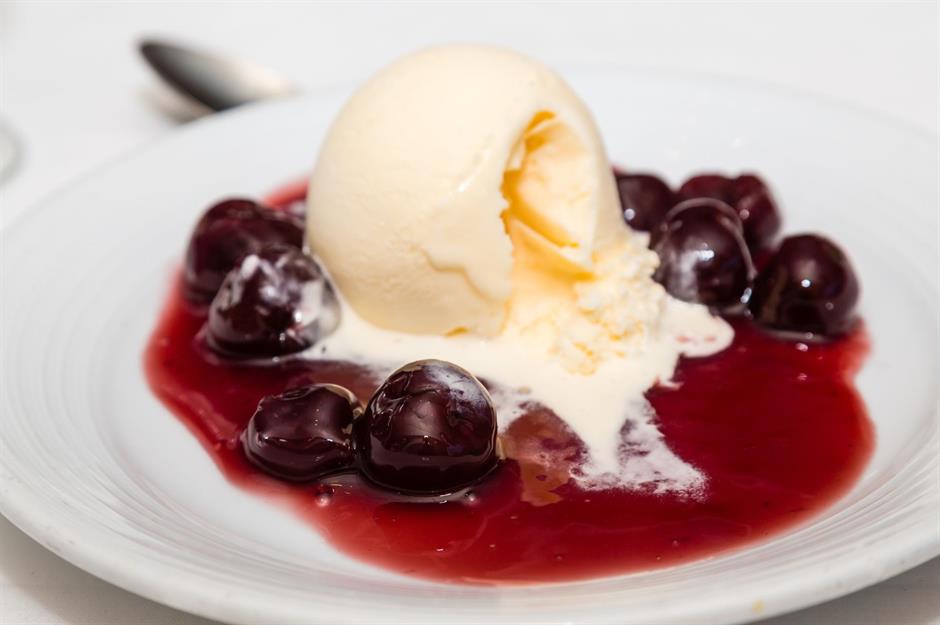
While it’s believed this pudding was created by Auguste Escoffier to celebrate Queen Victoria’s Golden Jubilee in 1887, the flamboyant dish resurfaced in the 1950s and 1960s as a dinner party centrepiece. Rich with flavour, whole cherries are cooked with liqueur and flambéed tableside to impress guests. It’s finished with a generous scoop of vanilla ice cream.
22. Kellogg’s Coco Pops
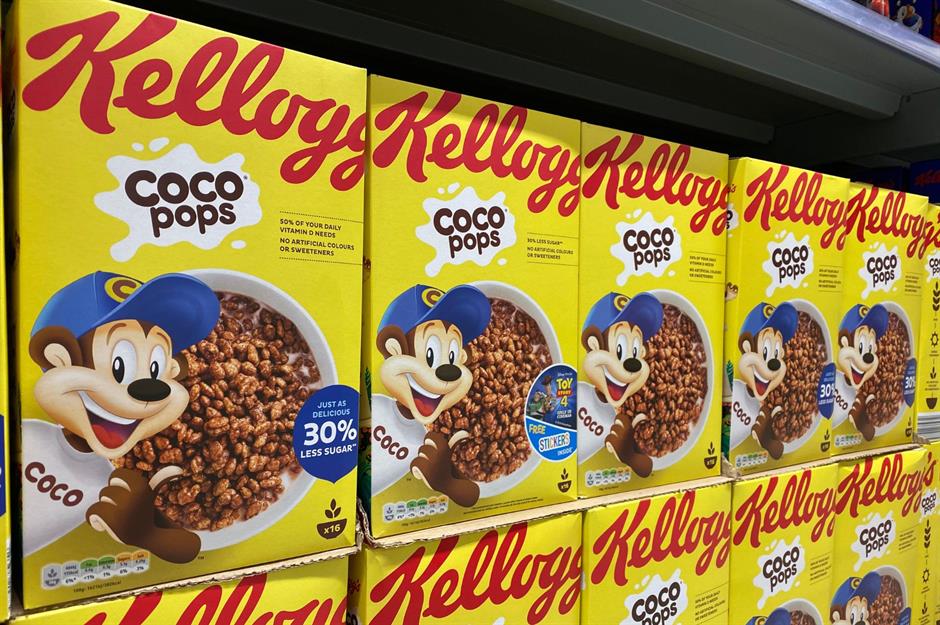
Tony the Tiger may have won over children’s hearts the decade before, but it was the launch of Kellogg’s Coco Pops in 1960 when breakfast cereal got really exciting. The success of this chocolate-flavoured puffed rice cereal was largely thanks to its huge advertising campaign, as well as the arrival of Coco the Monkey and his friends in the mid-1960s. After all, who wouldn’t rather have a bowl of Coco Pops?
21. Quavers
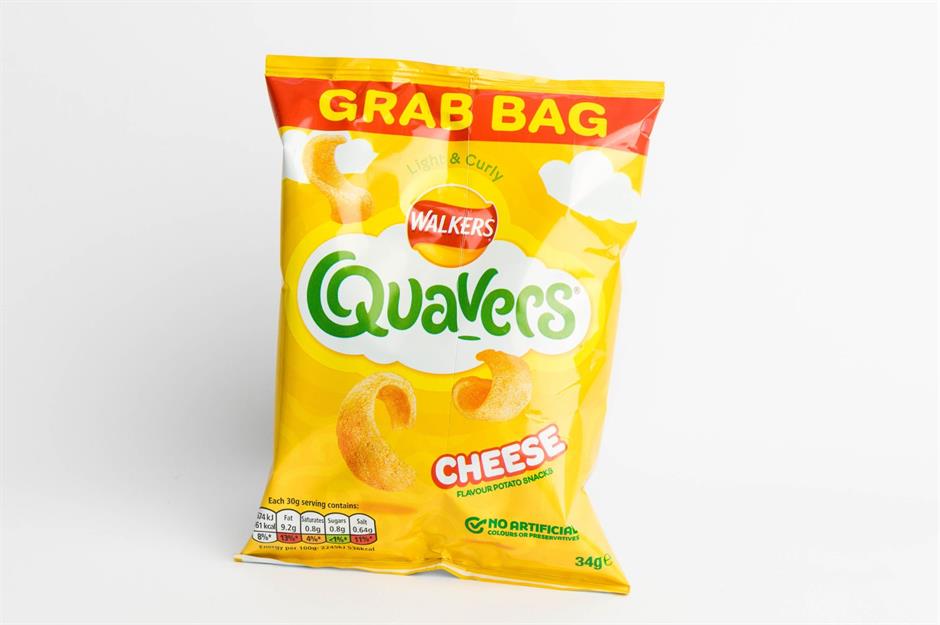
A newsagent staple, it’s hard not to love a cheesy packet of Quavers. This classic potato-based treat was first introduced in 1968 by snack brand Smith’s. You can probably remember tearing open a bag and letting the curly crisps melt on your tongue. Now produced by Walkers, you can still find the distinctive yellow packet lining supermarket and petrol station shelves all over the country.
20. Galaxy
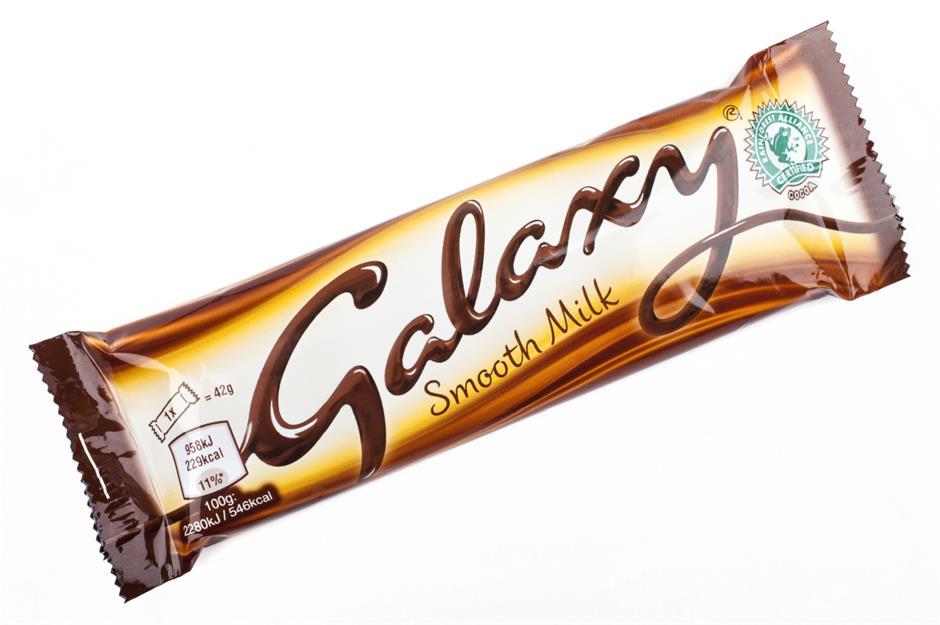
Defined by its velvety texture and silky-smooth sweetness, the Galaxy landed on supermarket shelves during the 1960s – and has gone on to become one of the world’s bestselling chocolate bars. Complete with its brown-and-cream wrapper, the brand now boasts a huge range of styles, from caramel-centred bars to miniature-sized Minstrels.
19. Parmo
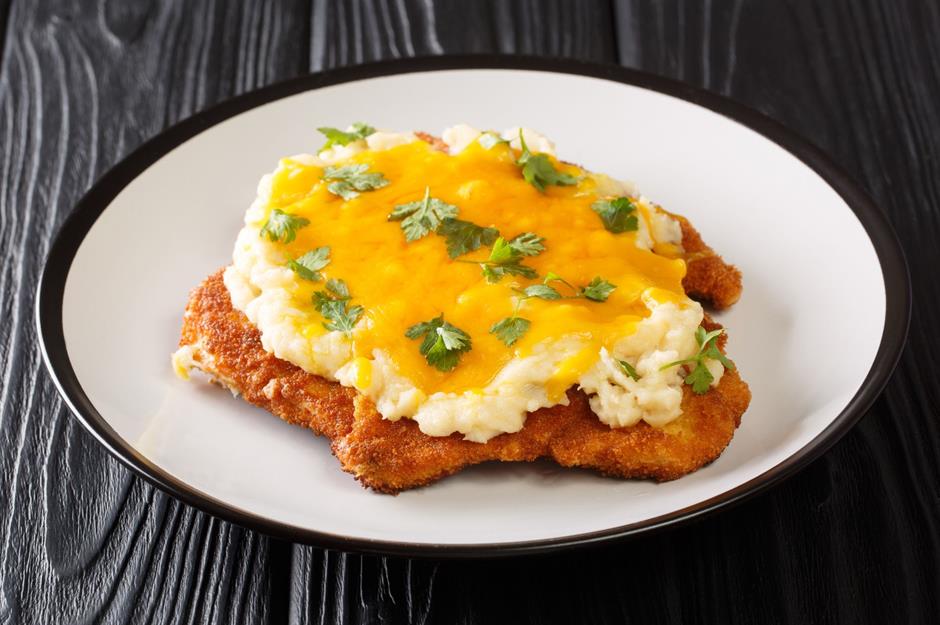
Crispy, creamy and moreishly cheesy, this dish has been a popular choice in Middlesborough, North Yorkshire for over six decades. The regional dish is thought to have been created by Greek American navy chef Nicos Harris, after he opened a restaurant in the late 1950s. Taking inspiration from the Italian melanzane alla parmigiana, this British version uses either a flattened chicken or pork cutlet, that’s then breadcrumbed and deep-fried. It's finished with a béchamel sauce and melted cheese.
18. Jelly and custard
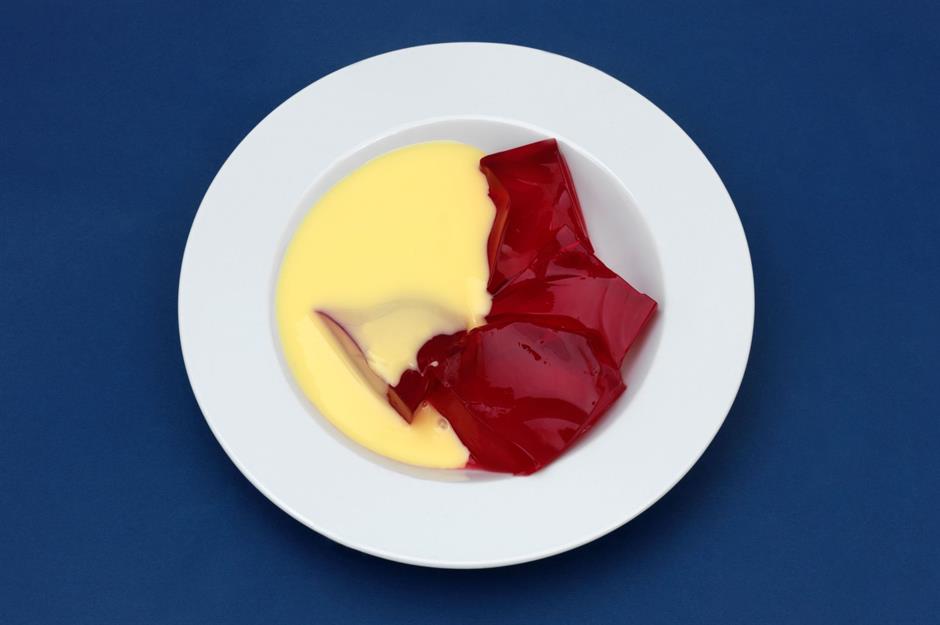
Can a pudding get any more nostalgic than jelly and custard? This dish usually came loaded with a scoop of strawberry or raspberry-flavoured wobbly jelly and a ladle's worth of vanilla custard. Soft and comforting, you might remember being served up a bowl of this after dinner at your grandparents' house.
17. Fab
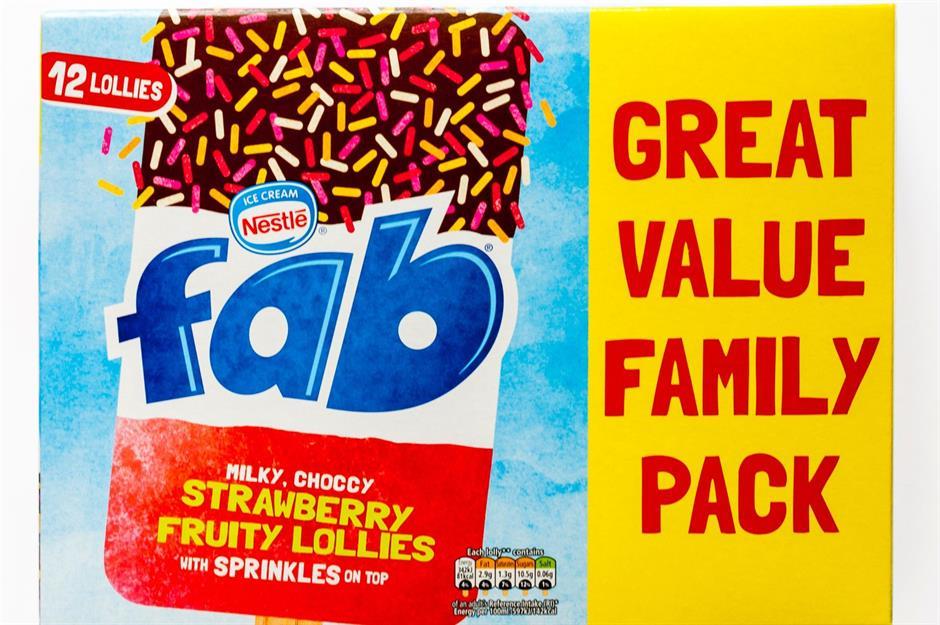
Another sweet treat favourite first launched in the 1960s was the Fab. Complete with three tasty layers, this frozen lolly features strawberry, milk and a chocolate section finished with hundreds and thousands. Produced by Nestlé, the Fab was originally launched alongside the rocket-shaped Zoom lolly to coincide with the release of the TV series Fireball XL5 and Thunderbirds. It has stood the test of time, still available over 50 years later.
16. Twix

This milk chocolate bar, complete with a sweet biscuit and caramel centre, has been gracing corner shop shelves since 1967 – and continues to be a beloved global favourite. Produced by Mars Incorporated, the two-fingered bar has become renowned for its signature gold-and-red wrapper. These days, the Twix comes in a couple of varieties, including Twix White and Salted Caramel flavours.
15. Arctic Roll
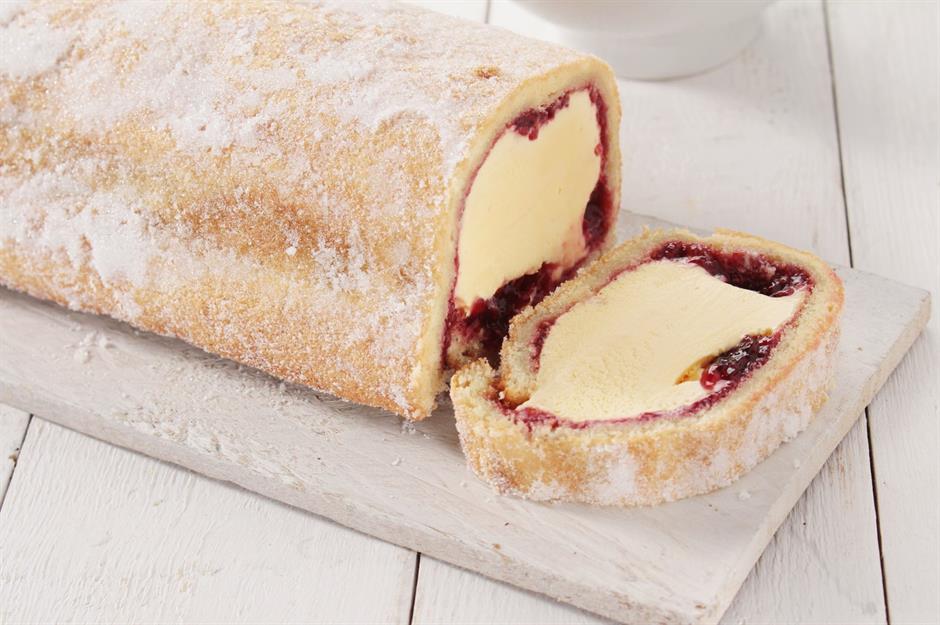
Another signature dinner party dessert from the decade, it’s widely agreed that Dr Ernest Veldenin created the Arctic Roll in the late 1950s. This pudding features a creamy vanilla ice cream and raspberry sauce swirl centre, finished with a sheet of delicate sponge that’s rolled to create its renowned cylinder shape. Housewives began experimenting with the dish at home throughout the 1960s, before Birds Eye made everything easier with the release of its manufactured frozen version in the 1970s.
14. Angel Delight
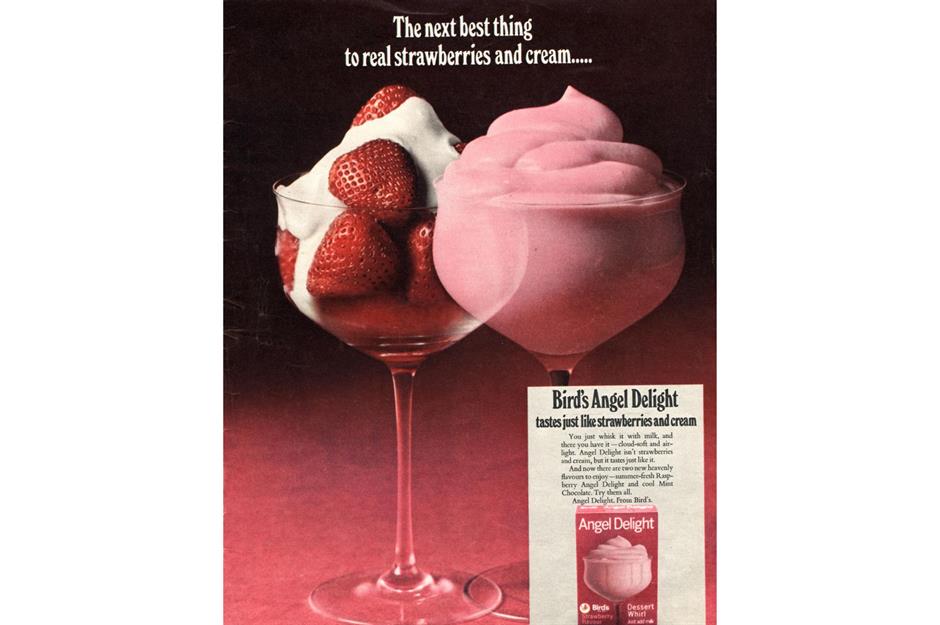
All you needed to do was add milk and Angel Delight would turn from a colourful powder to a creamy, throw-together pudding in minutes. Produced by Bird’s, the product launched in the late 1960s and continues to be a nostalgic favourite enjoyed by many. These days, you can buy flavours such as strawberry, banana, butterscotch and chocolate.
13. KFC Original Recipe Chicken
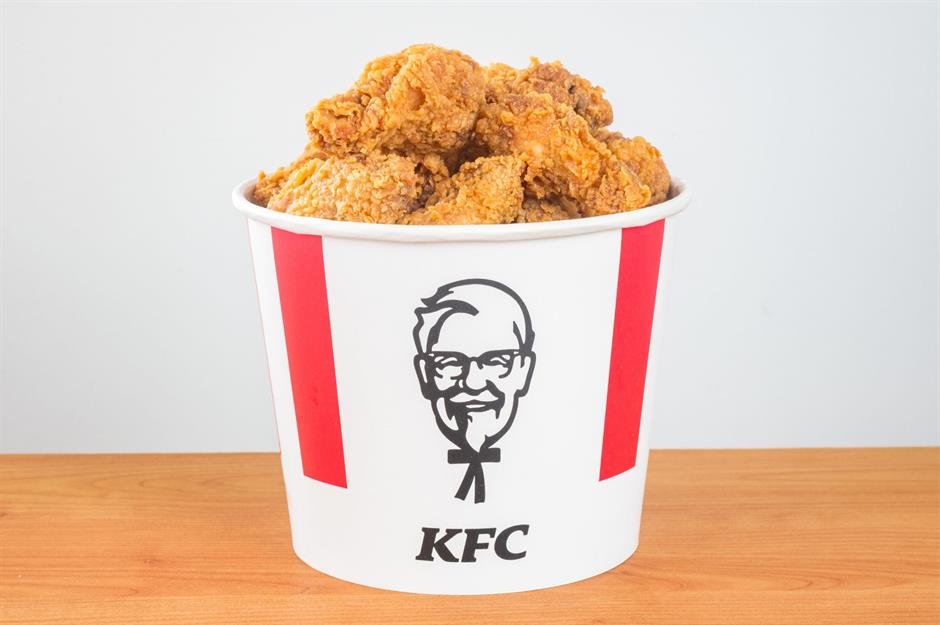
Following a bumpy – but resoundingly successful – launch in the US, Colonel Sanders brought his secret 11 herbs and spices mix to the UK in 1965, opening the first KFC location in Lancashire. It wasn’t long before KFC’s Original Recipe Chicken was eaten across the UK. Nowadays, a bucket of this has become a fast food staple for many.
12. Marathon
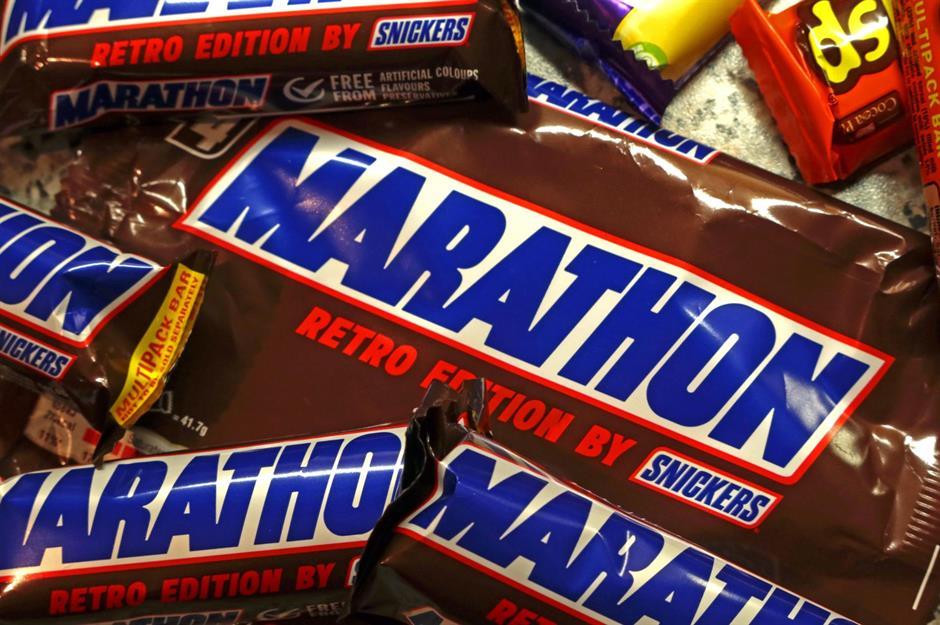
Following a successful launch in the US, this peanut-loaded bar travelled across the Atlantic, landing in the UK and Ireland in 1968. Complete with a caramel, peanut and nougat centre, the milk chocolate bar initially launched as Marathon, before rebranding to Snickers in 1990 to follow the brand’s global name. Despite fans being up in arms about the name change, it’s still one of the best-loved bars on the market.
11. Smash
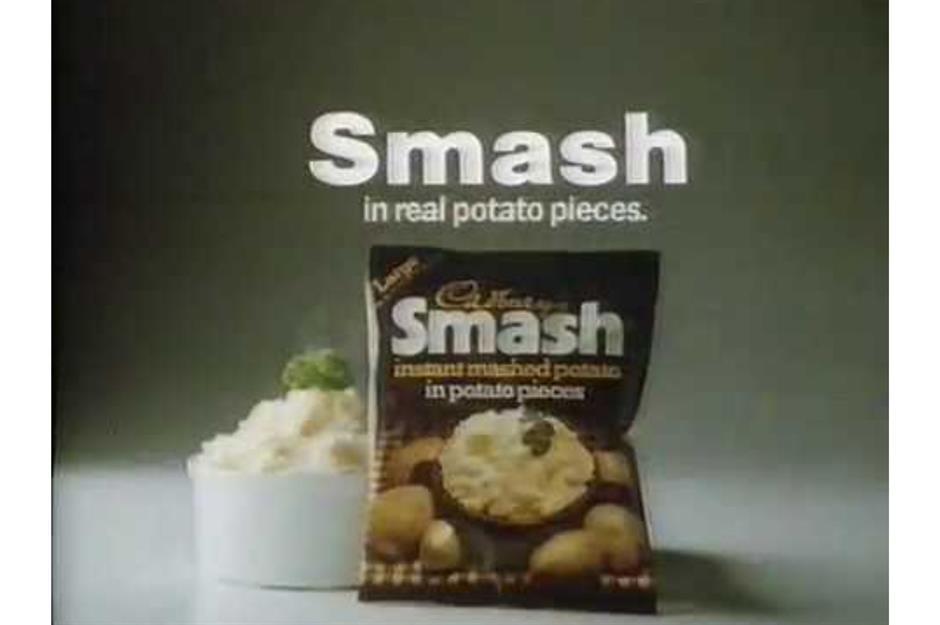
Creamy, easy and all-round delicious, we have the 1960s to thank for the invention of Smash. Originally produced by Cadbury, these instant mashed potato packets are now produced by Sheffield-founded food brand Batchelors. Rather than laboriously mashing potatoes from scratch, Smash made lives a whole lot easier, allowing you to simply mix water and milk into the potato granules; the result was always silky smooth, lump-free mash.
10. Mr Kipling cakes
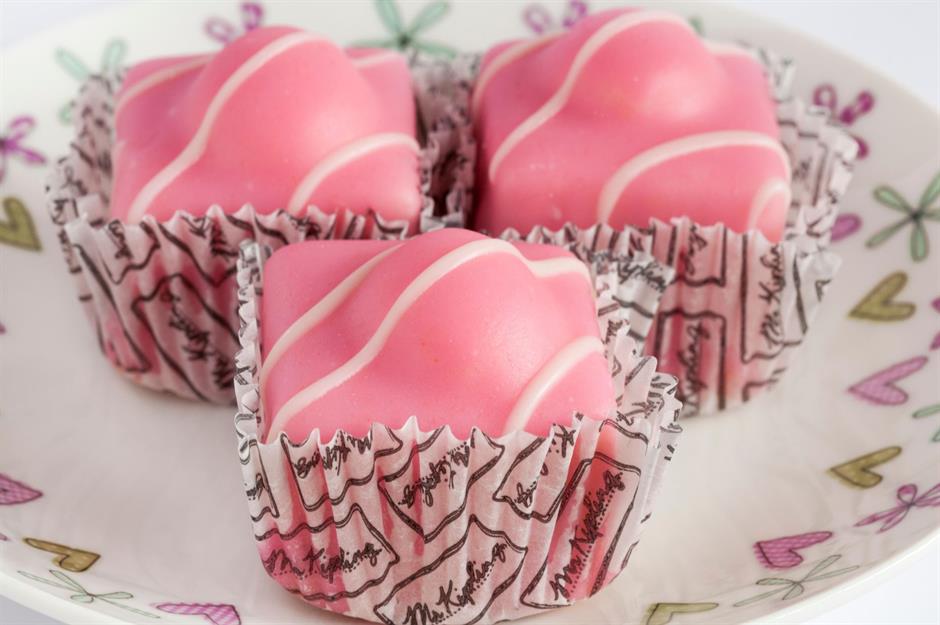
If there was one sweet treat brand you could guarantee to see at a children’s birthday party in the late 1960s, it was Mr Kipling. Originating in Carlton, South Yorkshire, the brand went on to become one of Britain’s top cake manufacturers by the mid-1970s. It’s still almost impossible to resist one of Mr Kipling’s iconic French Fancies cakes, complete with soft sponge, a vanilla cream top and sweet fondant icing.
9. Opal Fruits
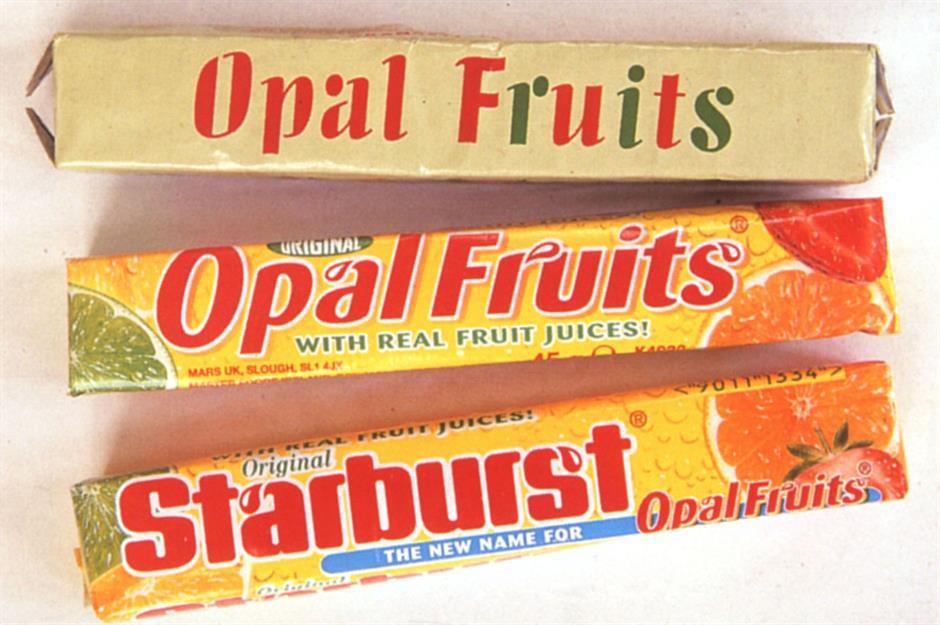
Launched in the early 1960s as Opal Fruits, these individually wrapped sweets came in a host of original, fruity flavours, including lemon, lime, orange and strawberry. In later years the brand ended up introducing the now-popular blackcurrant flavour, and combining lemon and lime into one sweet. It wasn’t until 1998 that the little cubes were renamed as Starburst. Nowadays, these sweets are enjoyed across the globe and come in a range of styles, from Very Berry to Sours.
8. Vesta ready meals
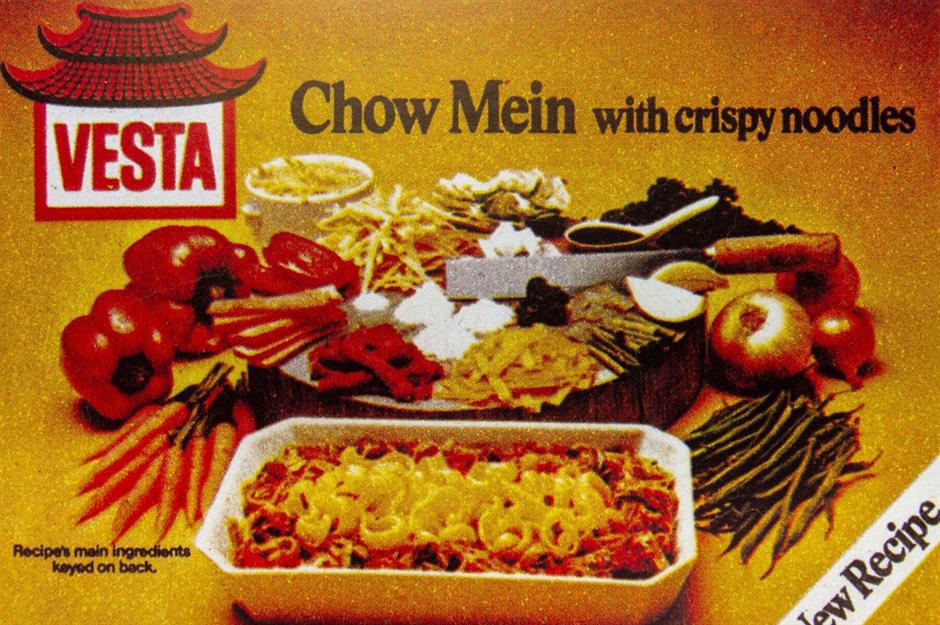
From prawn-loaded paella to chow mein topped with crispy noodles, Vesta’s iconic ready meals are a real blast from the past. Produced by Batchelors, they were first launched in the early 1960s and quickly became an easy mid-week option for households across the nation. If you're after a touch of nostalgia, you can still find these meals in some supermarkets today.
7. Little Chef’s diner dishes
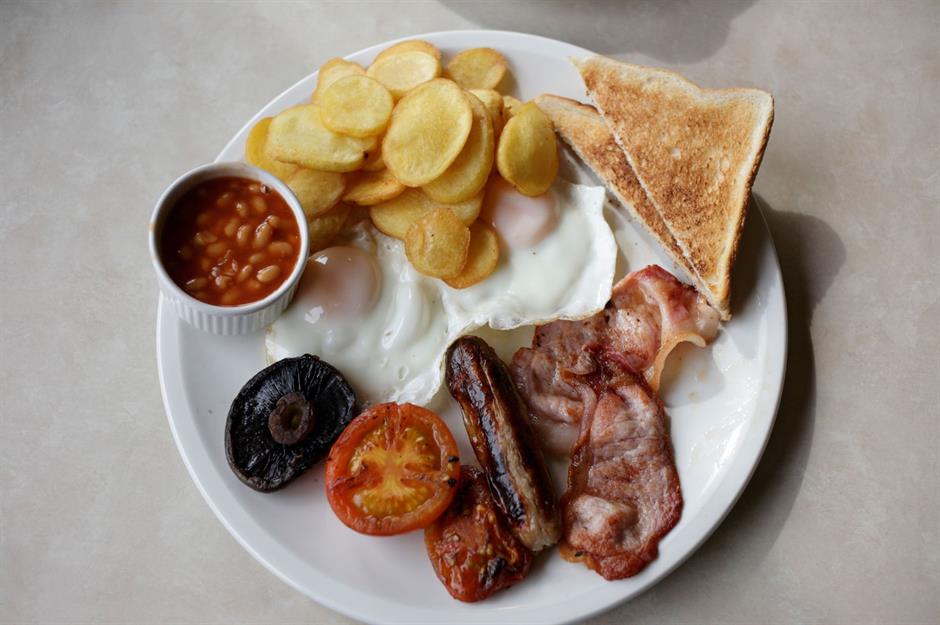
No summer holiday getaway was complete without stopping at one of these roadside restaurants. Taking inspiration from American diners, Little Chef was brought to life in 1958 and went on to become a destination spot for hungry motorway travellers. At its peak, the chain had over 400 locations across the country, before eventually closing down completely by the 2010s. We still have fond memories of the hearty Olympic Breakfast and lukewarm coffee.
6. Prawn cocktail
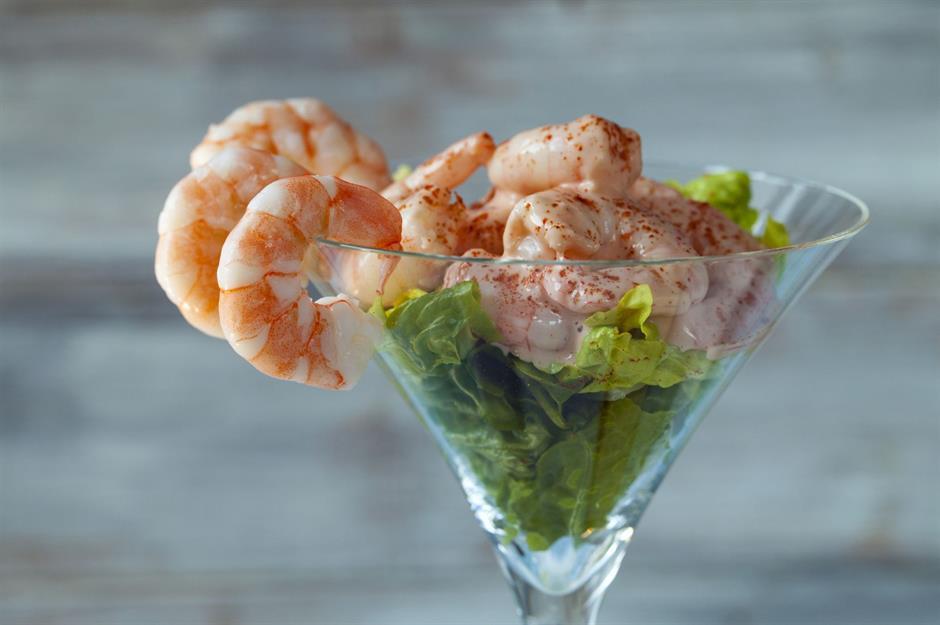
Often served in a Martini glass, prawn cocktail – a seafood salad of cold prawns in Marie Rose sauce (a mix of mayo, ketchup, lemon juice and pepper) on a bed of lettuce – is synonymous with the 1960s. You would find this cold appetiser served up in restaurants and at dinner parties throughout the UK. These days you'll often find this throwback dish on pub and restaurant menus, but usually with a gourmet twist.
5. Chinese takeaways
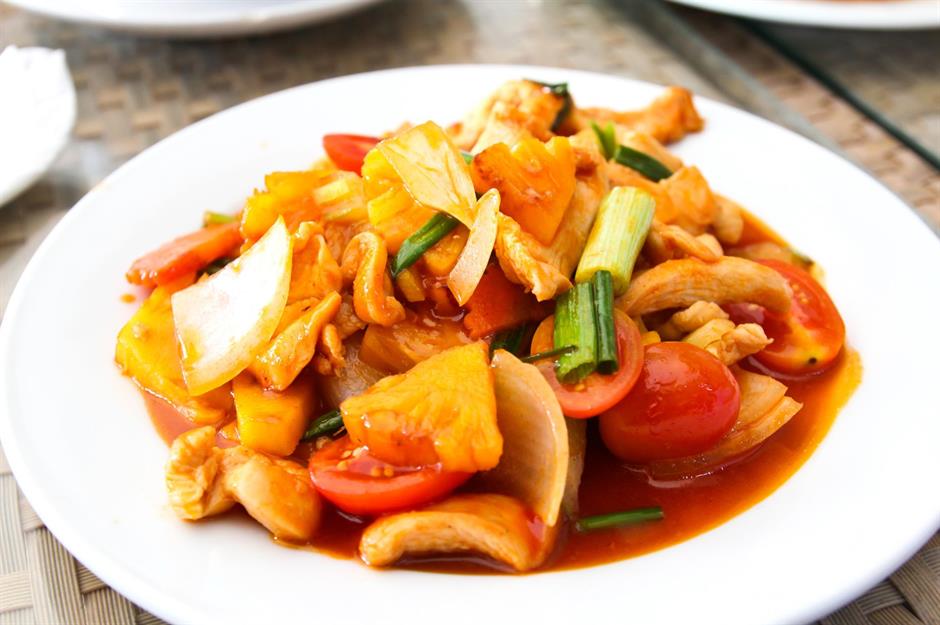
Thanks to post-war immigration laws, more and more Cantonese immigrants began to settle across the UK, opening takeaway joints and restaurants in former fish and chip shops towards the end of the 1950s. By the 1960s, a Chinese takeaway became a regular weekend treat for many households. Brits began sampling new flavours and dishes they had never tried before, from sweet and sour chicken to egg fried rice.
4. Creme Egg
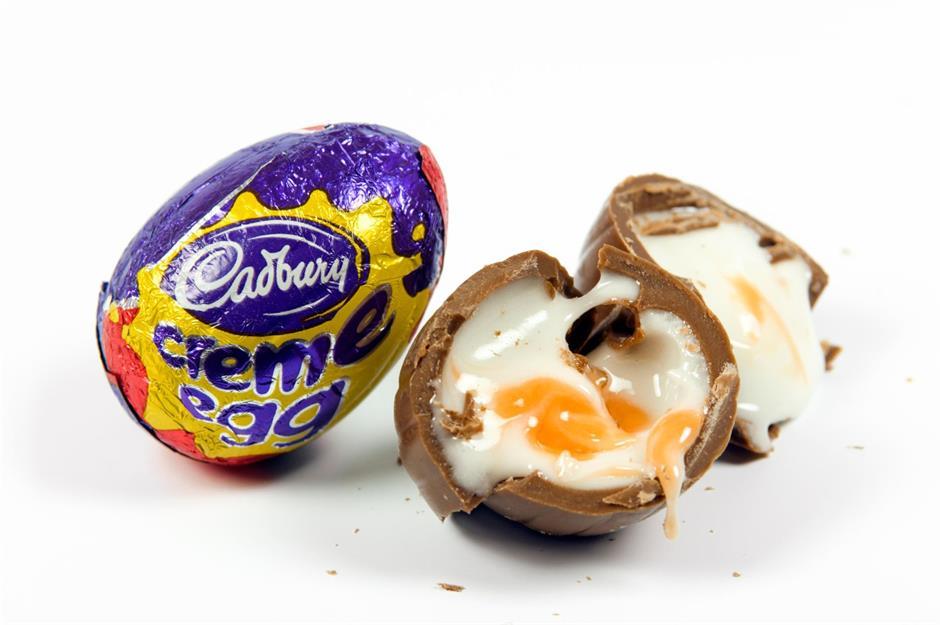
One of Britain's greatest chocolate inventions, the original Creme Egg was launched by chocolate brand Fry's in 1963, and quickly became a bestseller. The brand was sold off to Cadbury, with the Creme Egg – complete with its red, yellow and purple wrapper – relaunched under the Cadbury's banner in 1971. An essential Easter indulgence, the egg-shaped chocolate is filled with a rich white and yellow fondant filling. Whether you eat it in one or bite the top off and scoop out the middle, it’s hard to beat.
3. Walkers Salt & Vinegar
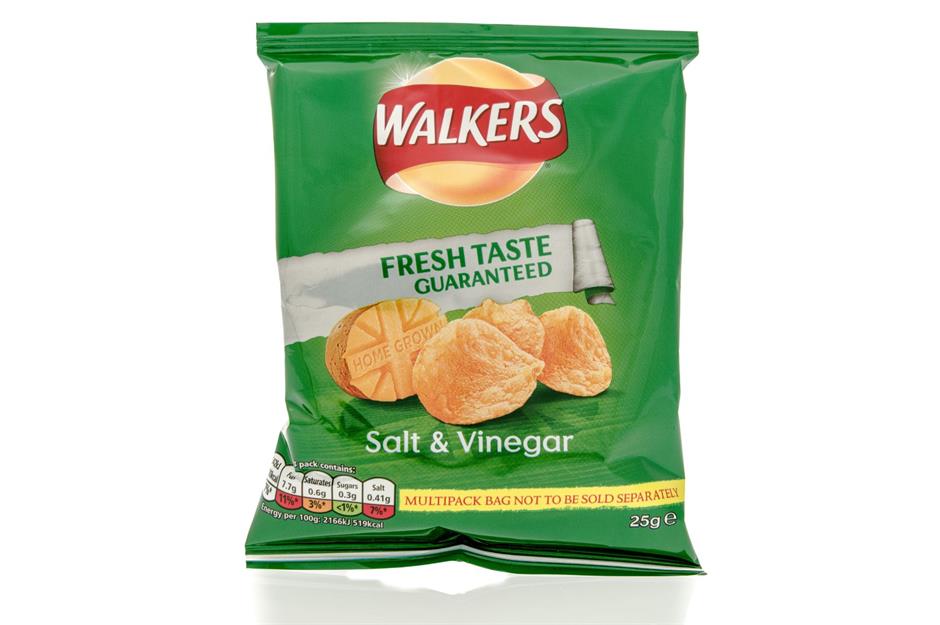
It’s difficult to imagine a time when these green packets didn’t line petrol station shelves, but Walkers Salt & Vinegar didn’t launch until 1967. Brought to life at the snack manufacturer’s Leicester factory, this potato crisp style is renowned for its sharp, vinegary taste and salty finish. It continues to be a national favourite all these years later.
2. Spaghetti Bolognese
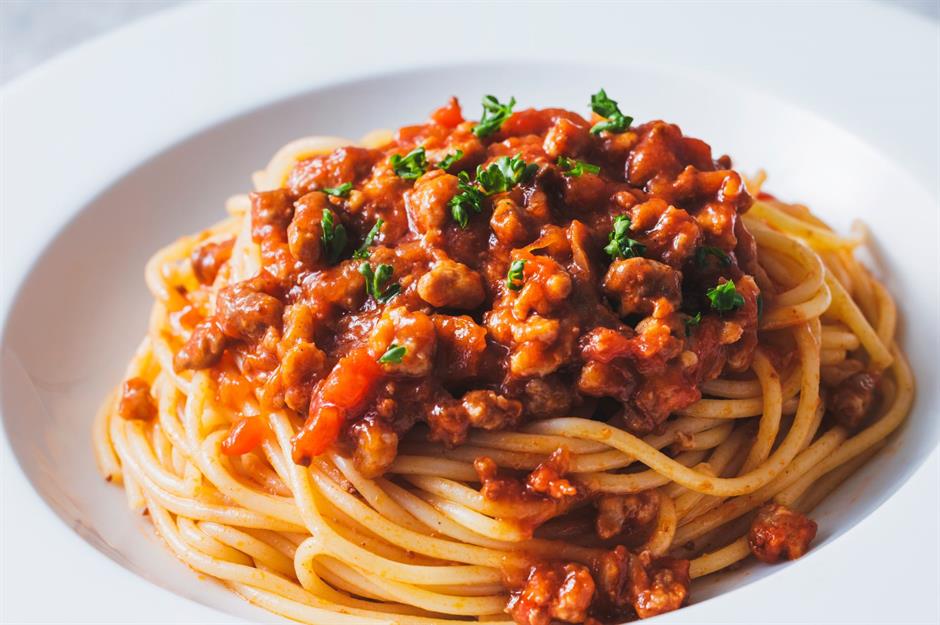
From the rise of takeaways to the arrival of American fast food joints, British taste buds really began expanding post-war. Another cuisine that made its way to the UK was Italian, thanks in part to the ingredients British soldiers brought back after the Second World War. Soon households up and down the country were whipping up pasta dishes, including this weekday staple. To make it, slippery spaghetti was piled into bowls with a ladle's worth of meat-packed herby Bolognese sauce and topped with a sprinkle of cheese. It remains a beloved family favourite today.
1. Indian takeaways
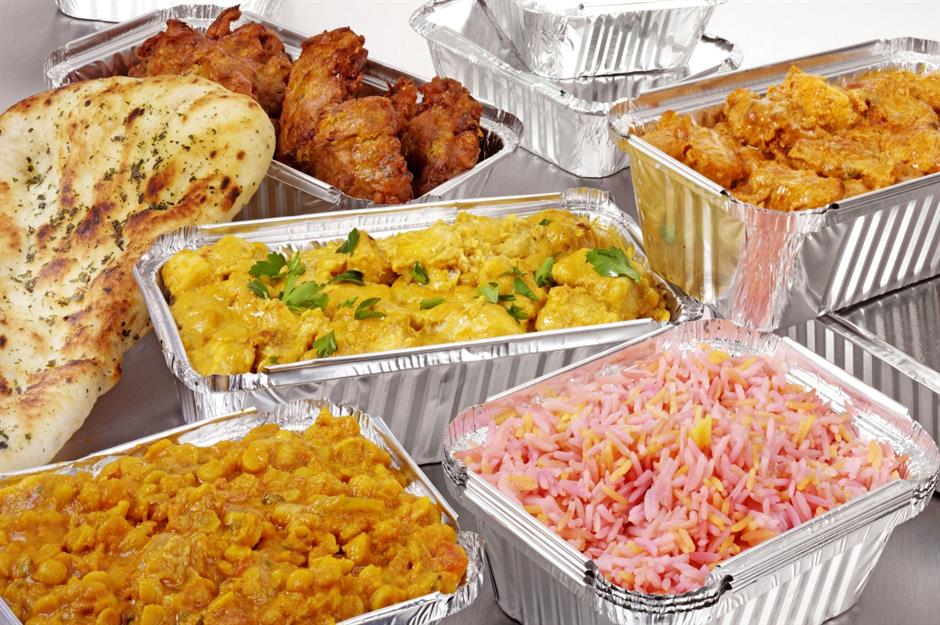
Just as Brits began frequenting their local Chinese restaurant, there was also a huge rise in Indian takeaways and curry houses opening across the country throughout the 1950s and 1960s. Many immigrants from India, Pakistan and Bangladesh began settling in the UK, setting up shops in small towns and cities – and quickly Brits began expanding their palettes, sampling everything from creamy kormas to buttery naans.
Comments
Be the first to comment
Do you want to comment on this article? You need to be signed in for this feature